The Northern Lights
The whole world, it seems, was caught up with the light show happening in the skies above two nights ago, thanks to a geomagnetic storm on our nearest star. I myself jumped on the bandwagon and took a walk down to the beach around 11 p.m. to see what I could see.
To be honest? I was a little disappointed. As soon as I stepped out into my street, I looked up and saw a green haze overhead, visible even with all the light pollution generated in my neighbourhood, one of the most densely-populated postal codes in all of Canada. Down by the water, where it’s much darker, I could see that the haze was definitely aurora borealis, but it was faint. I set up my tiny camera on my tiny tripod, balanced it on a beach log, and tried a variety of exposures. This photo, taken with a 30-second exposure, was the best of the lot. The only editing I did was some cropping. That pink you see? Not visible to the naked eye. It only comes through with the long exposure.

Some years ago, I was travelling from Nanaimo to Vancouver late at night, and spent most of the ferry trip on the outer deck in the dark, watching a vivid display of dancing emerald green over the North Shore mountains. At the time, I didn’t know what I was looking at, but later realized it must have been the Northern Lights I had witnessed.
I didn’t know what I was looking at because it’s rare to see the Northern Lights this far south. In Alberta, they were almost routine. I remember many a winter’s night in Edmonton seeing white streaks of light in the sky like will-o’-wisps as I went about my evening.
The most spectacular Northern Lights’ display I’ve ever seen, and my first time seeing them in colour, was one summer while camping in northern Alberta with my sister and a friend. This was the same friend I had trained around Europe with the year before, and she and I started reminiscing about our travels as we sat around the campfire. My sister had long gone to bed when we noticed the Northern Lights above us. The mesmerizing dance of pink and green was unlike anything I’d ever seen.
I was kinda hoping for the same the other night. My suspicions are that the light pollution of downtown Vancouver interfered with my experience.
Even so, we got lucky this weekend with summer-like temperatures, so it didn’t take much effort to step out for a quick stroll before bed, and share an amazing other-worldly experience with dozens of strangers doing the same.
Arrival
It doesn’t matter where you go or how long it takes to get there. That feeling of “we’re here!” is always such a welcome sensation.
Having been to Oahu once before, I had some expectations about our arrival: the tropical temperatures as soon as you step out of the plane, the long arrivals hall at the airport sans walls (unheard of in Canadian airports), the ubiquitous palm trees …
Collecting a rental car at the airport is not typical for me, and we were both surprised at the long queue ahead of us. But once we were inside our Mustang convertible, we were up and on our way.
Arriving at a home exchange always involves one surprise or another. You read the description of the home and your hosts’ instructions carefully, but not everything completely registers until you see it in person. Hotel rooms are generic and pretty much all the same; a home is personal. It can be quirky and not quite what you expected. It can wildly exceed your expectations. Or, it can be both.
This home exchange was in Lanikai, which is a suburb of the town of Kailua on the windward side of Oahu, about a half hour drive from Honolulu. Kailua means “two currents” and is so named because of the two currents that run through Kailua Bay.
From the deck on the upper floor of the hill house where we stayed, we had a view of that bay. Here’s the first photo I took, within minutes after our arrival.
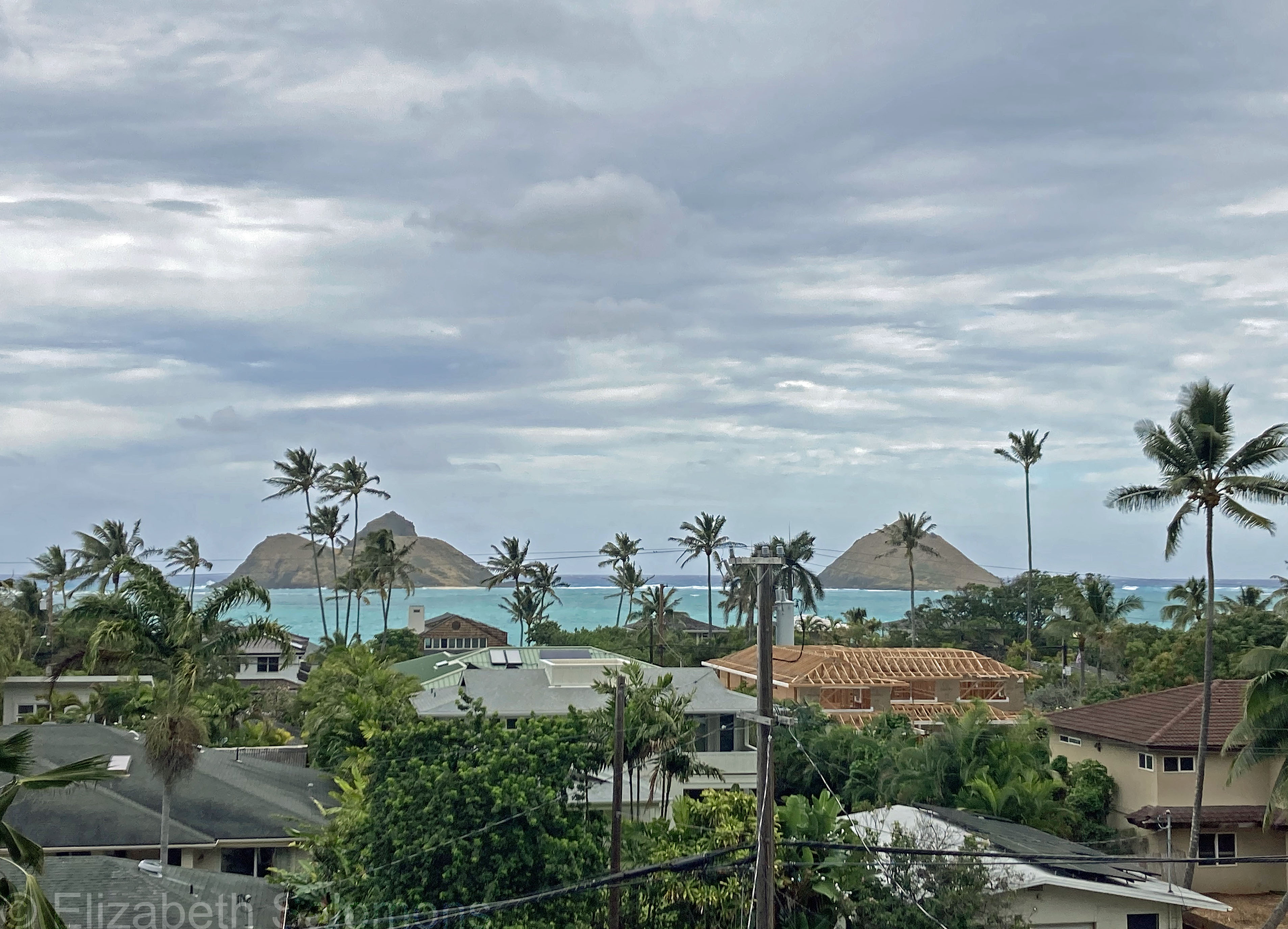
And here is the photo of our first sunrise the next morning.
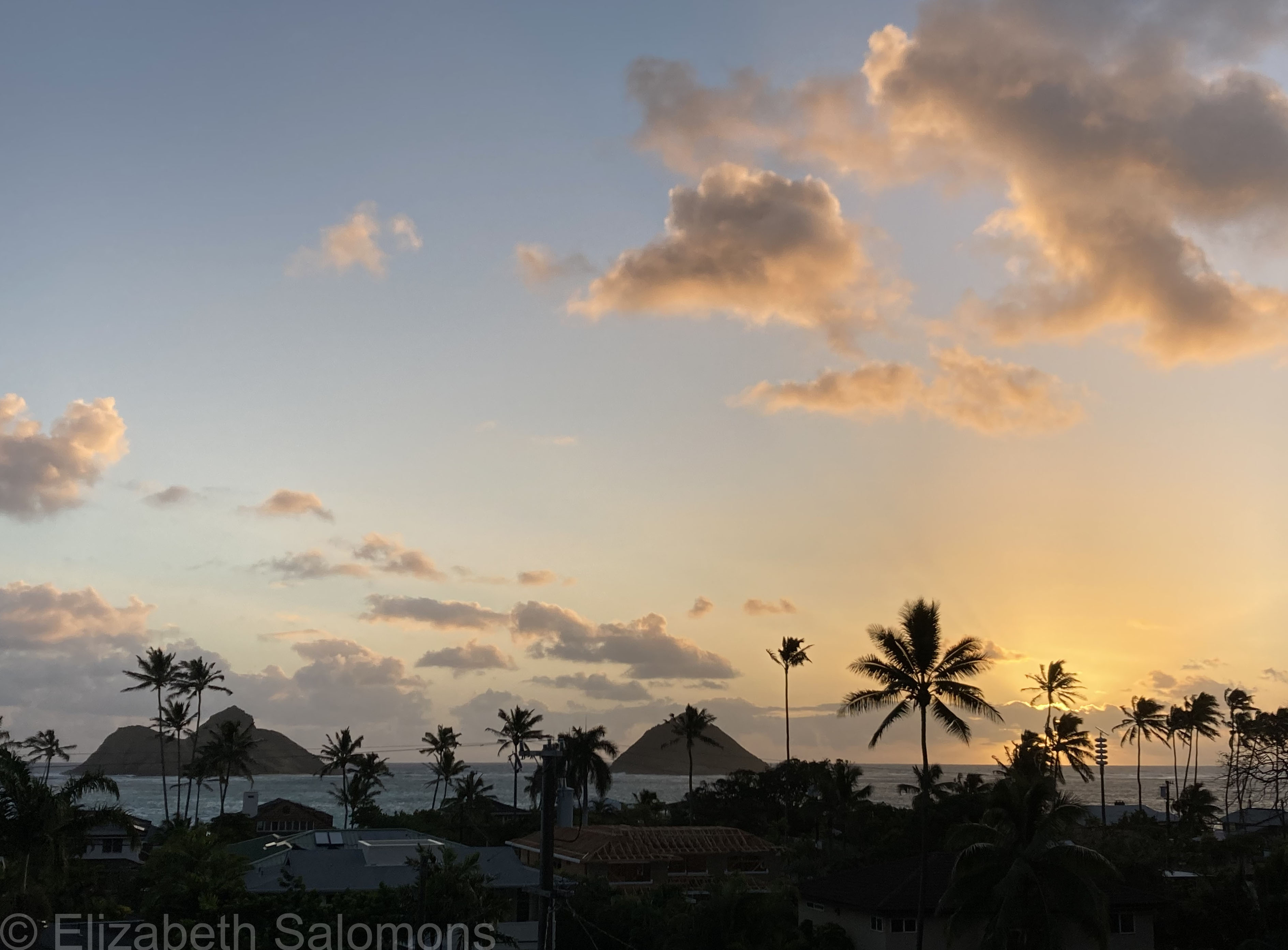
More or less by fluke, we ended up living on Vancouver time the entire week we were in Hawaii, which maximized our daylight hours, but also made it easy to get up every morning in time to see the rising sun peeking over the palm trees. The glorious thing about sunrises (or sunsets) is they are never the same.
Here’s another one.
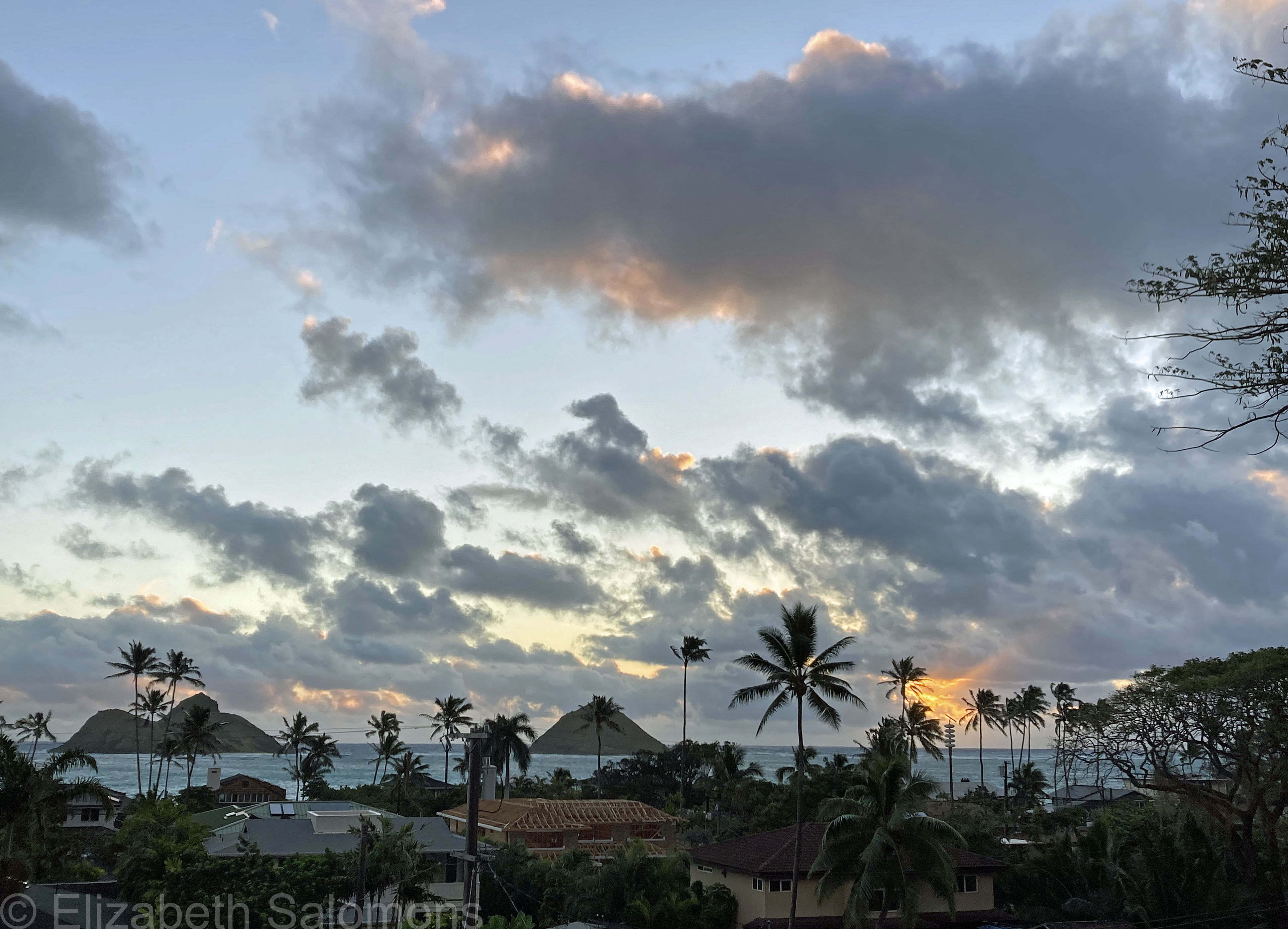
Happy Easter!
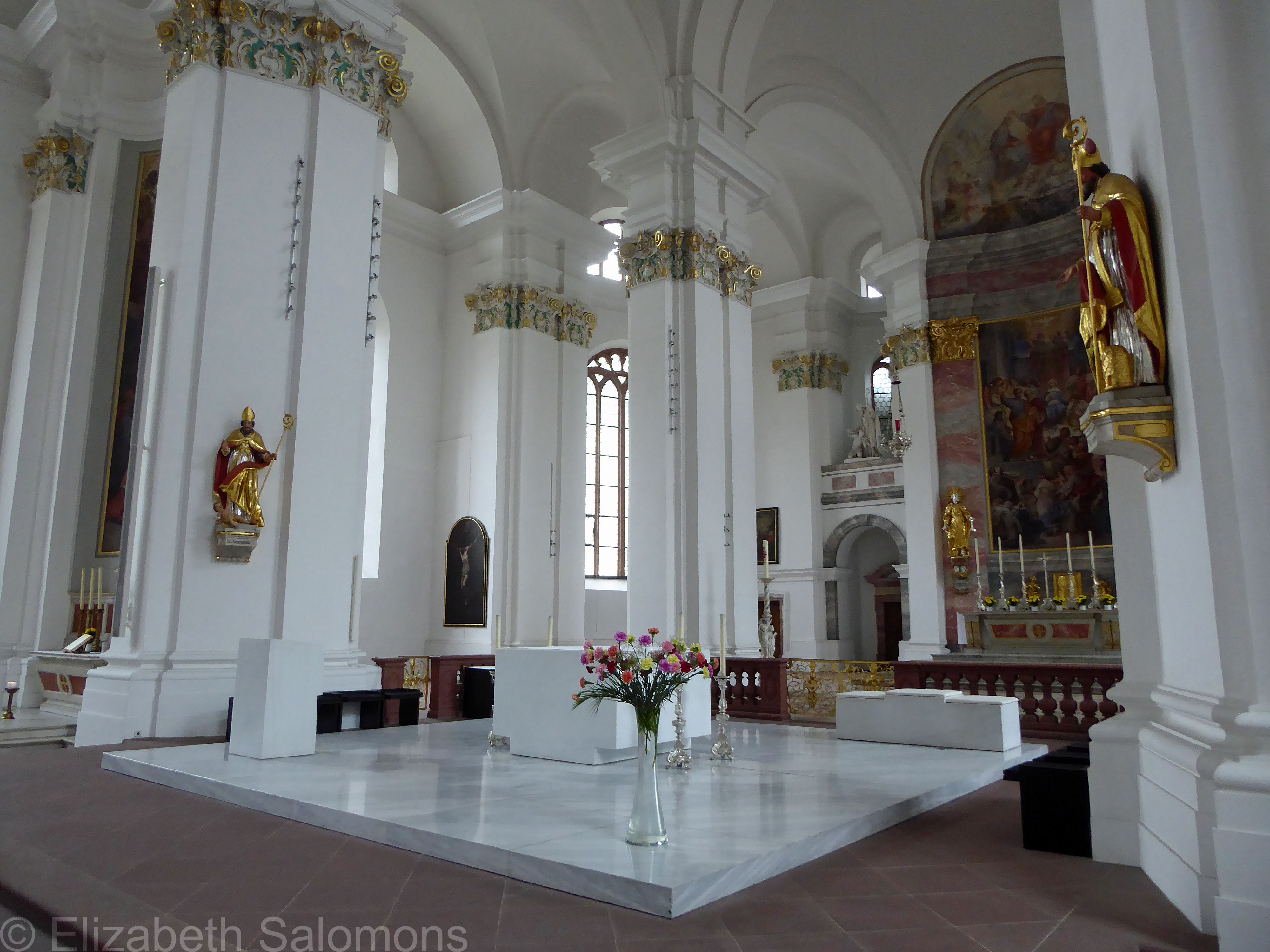
Jesuitenkirche, Heidelberg, September 2017
Through My Lens: Jesuitenkirche
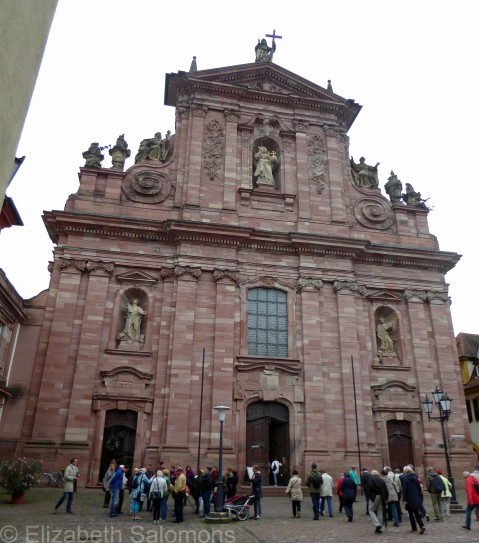
For the past two Sundays, I posted photos of the Protestant Church that stands over the Old Town of Heidelberg. For today, Palm Sunday, I’m posting a photo of the Catholic Church that stands in the centre of Heidelberg’s Old Town. That would be the Jesuitenkirche (Jesuit Church).
This church, built in the Baroque style, was constructed in fits and starts throughout the eighteenth century. The Jesuits began the process in 1712, with the Elector Palatine at the time, Johann Wilhelm II, donating the land. The stone came from the Heidelberg Castle and the lumber from nearby forests. A bell tower (not seen in this photo) was added at the end of the nineteenth century.
After the Jesuit order was abolished in 1773, the church was taken over by the Lazarists. It later served as a hospital before eventually becoming the parish church of the local Catholic community in 1809.
Through My Lens: Inside the Heiliggeistkirche
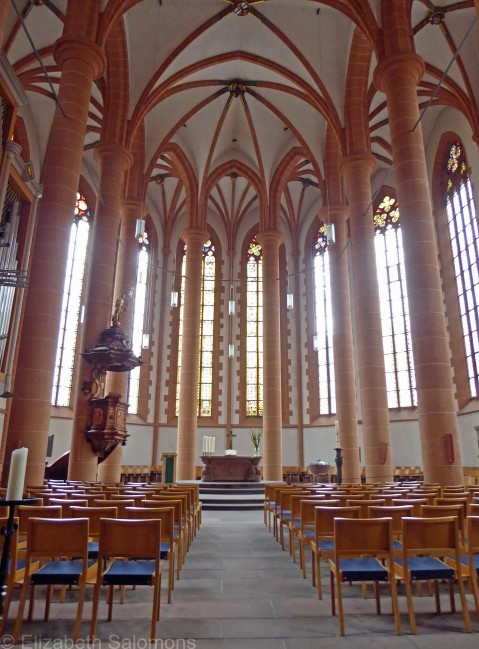
Last week I posted a photo of the Heiliggeistkirche in Heidelberg and today, for the Fifth Sunday of Lent, I’m posting a photo of what it looks like on the inside. That pink sandstone you see is from the Neckar Valley; it was used to build much of Heidelberg’s Old Town.
Like many churches in northern Europe, the Heiliggeistkirche was originally Roman Catholic. Today it is Protestant, but for much of its history, a wall divided the nave from the chancel and a second altar was built in the centre of the church. That way, the church could accommodate both Catholic and Protestant worshippers. The wall was not removed until 1936.
Hawaii Redux
Did you guess that Hawaii was the destination of my winter break? If so, you would be right.
It was my first time back to the Aloha State since my first visit more than 15 years ago, and it was lovely to be there. So very lovely.
I have many photos to choose from, but I decided to post this one first because, to my mind, Diamond Head is as iconic a symbol of Hawaii as the pineapple I posted last week.

Through My Lens: Heiliggeistkirche
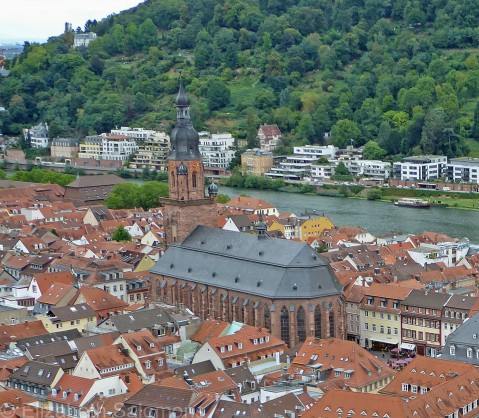
It’s the Fourth Sunday of Lent, and we’re moving on to Heidelberg. The skyline of this city in the Neckar Valley would not be the same without the Heiliggeistkirche (Church of the Holy Spirit). Built in the fifteenth century, this Romanesque and Gothic church is the largest in Heidelberg and stands high above the Old Town. It is one of the most-visited churches in Germany.
Winter Break
So. I finally got off the continent. Last week was my first time out of the country since 2018, my first time outside of North America since 2017, and my first winter holiday since 2014.
That’s a whole lot of pent-up travel energy.
It was a fabulous week. Any guesses as to where I went? Here’s one hint: there’s a Union Jack in one corner of its flag.
And here’s another.
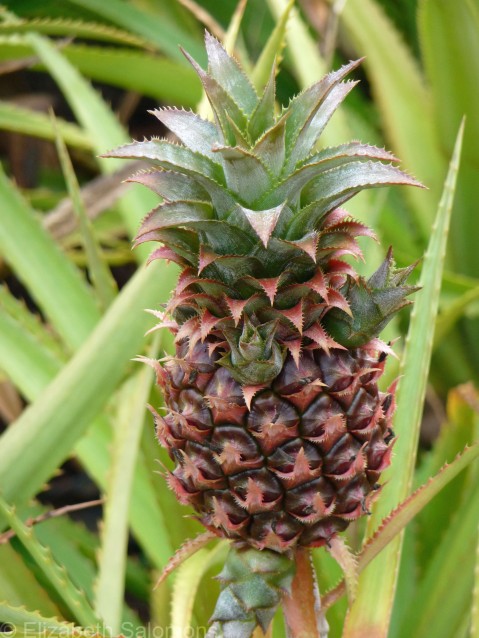
Through My Lens: Schlosskirche

For the Third Sunday of Lent, I’m posting a photo from inside the Schlosskirche (Castle Church) in Wittenberg. I’ve written about this church before, in connection with that revolutionary–reformer, Martin Luther.
A chapel has stood on this site since 1340. Between 1490 and 1511, a church in the Late Gothic style was built, attached to the castle just beside it. (Hence, the name.) That castle was the home of Frederick III, Elector of Saxony at the time. Both Frederick (also known as Frederick the Wise) and Martin Luther are buried in the church.
The Schlosskirche was destroyed during the Seven Years’ War in 1760, but later rebuilt. The doors that memorialize Martin Luther’s 95 theses were dedicated in 1858 and the church has been on the UNESCO World Heritage List since 1996.
Through My Lens: Kaiser-Wilhelm-Gedächtniskirche
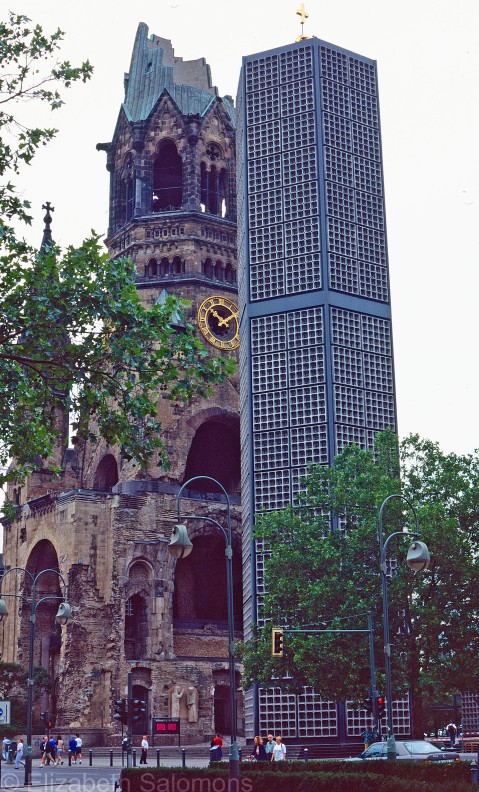
Fourteen years after my first visit to Germany, I was back. Once again, I was hopping on and off trains, but this time I was on a European walkabout with my dad.
Two significant events took place between my first two trips to Germany. The first was the fall of the Berlin Wall and the second was the reunification of Germany. My dad and I stopped for just two nights in Berlin, so my impressions of the city are fleeting, but one image stayed with me. That would be the long line of construction cranes where a string of building projects were madly underway to fill the space where the Wall used to exist.
Another image that struck me was the Kaiser-Wilhelm-Gedächtniskirche (Kaiser Wilhelm Memorial Church), located in the centre of what used to be West Berlin. A church was first built on this site in the late nineteenth century. The kaiser at the time, Wilhelm II, named the Neo-Romanesque building after his grandfather, Kaiser Wilhelm I.
After being badly damaged during World War II, a new church was constructed, but the remnants of the original building were left as a memorial to the devastation of war. The photo above shows the original spire behind the bell tower of the new church.
The Kaiser-Wilhelm-Gedächtniskirche is my photo choice for today, the Second Sunday of Lent.
